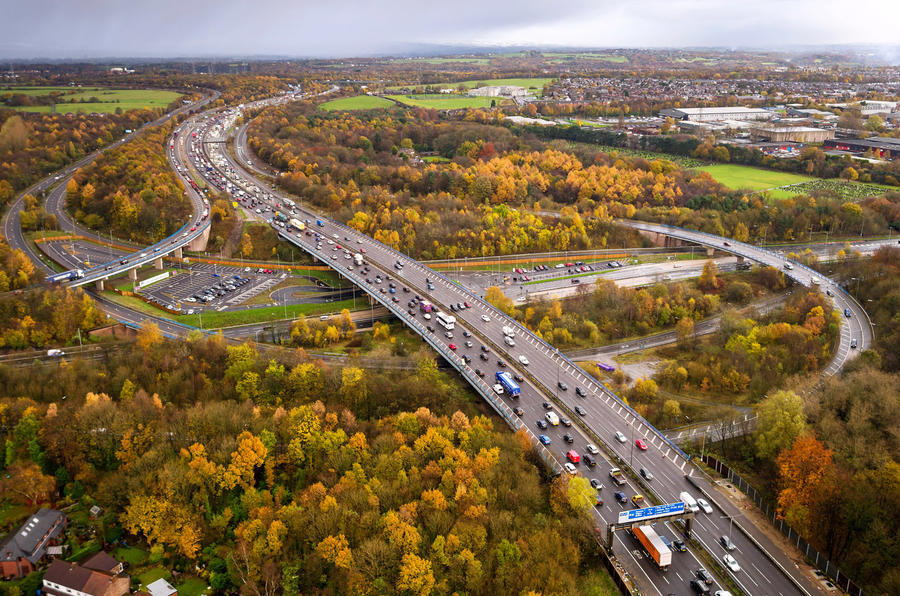No new smart motorways will be built in Britain until there is five years' worth of safety data available from those opened before 2020, the government has confirmed.
The announcement comes in response to widespread criticism that these roads are less safe than conventional motorways because the hard shoulder predominantly serves as a live lane and the replacement refuge areas are spaced far apart, providing drivers with fewer safe places to stop in the event of a breakdown.
The House of Commons Transport Select Committee called for the scheme's expansion to be halted in November, advising the government to collect five full years of safety and economic data from the 112 miles of smart motorways introduced before 2020.
However, while this data collection process is under way, National Highways will continue work on smart motorways already under construction, which the Department for Transport says will all open "with technology in place to detect stopped vehicles". Work on 'all-lane running' roads – wherein the hard shoulder is converted into a live lane – will be paused while a study is conducted into making them "simpler for drivers".
Meanwhile, the government has pledged £900 million to improving safety on existing smart motorways, of which £390m has been allocated to installing more than 150 new refuge areas across the network by 2025. The government says this will create a 50% increase in the number of places to stop in the event of a breakdown. The rest of the money will be spent on new technology to detect stopped vehicles, installing concrete central reservations and other safety improvements.
National Highways says it will also "ramp up communications so drivers have better information about how to drive on smart motorways".
These measures come in addition to those enacted as part of an 18-point 'Action Plan' to improve smart motorway safety in 2018, which increased the number of refuge areas and installed cameras to detect cars entering closed lanes - as indicated by a red X on the gantries.
The news was hailed as "positive, pragmatic progress" by the AA, which welcomed the move to introduce more refuge areas. It also noted that transport secretary Grant Shapps has agreed to investigate one of its own proposals from 2017: an 'emergency corridor' to allow ambulances, fire engines and police cars to quickly make their way through traffic jams in the absence of a permanent hard shoulder.
The AA recommends updating the Highway Code to advise drivers in the right-hand lane to pull over to the right, and drivers in the left lane to do the opposite, thereby leaving a clear path through traffic for emergency vehicles.









Join the debate
Add your comment
One of the many problems with driving in general and I suppose UK motorways motorways in particular is that people are busy looking for entrapment devices instead of looking where they are going. The better option was to raise the speed limit to 90-100 mph.
If they stuck to the speed limit then there would be no need to look out for entrapment devices.
The accidents I've seen or narrowly avoided have happened instantly - no form of monitoring would've prevented those (like the immediate refuge of a hard shoulder would've).
The problem is that shart motorways have been designed on the expectation that everyone drives like sensible, rational, qualified drivers - but the reality is that a large number of people on the roads don't drive like that.
And if you're the person breaking down on a shart motorway, there's no avoiding action you can take to avoid a reckless driver crashing into you.
Considering the accidents and deaths already caused by these ridiculous motorways ('shart' springs to mind rather than 'smart') allowing the carnage to go on for another five years should mean the eventual criminal charges aimed at those responsible should be changed from manslaughter to murder.